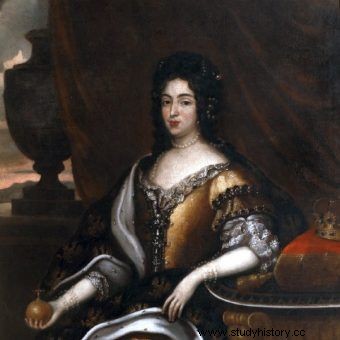
Marysieńka Sobieska (photo:public domain)
Marie Casimire de La Grange d'Arquien
Queen of Poland. Maria Kazimiera , affectionately called Marysieńka at the Polish court, was born in Burgundy, in the city of Nevers under the rule of the Gonzaga family. From this family came its great protector, Ludwika Maria, the wife of two Polish kings from the Vasa dynasty (Władysław IV and Jan Kazimierz). She came to the Vistula River in 1645 with the court of her guardian, at the age of 4. Contradictory information can be found about her origins. Most sources say that she was the daughter of Henri Albert de La Grange d'Arquien and Franciszka de la Châtre, steward of the court of Louise Maria. Some contemporaries have speculated, however, that she is in fact the Queen's illegitimate daughter.
As a favorite of the ruler, she was married in 1658 to one of the most powerful people in the country - Jan Sobiepan Zamoyski who remained loyal to the king during the Swedish invasion. From this relationship, she had four children who died before adulthood. After several years of unsuccessful marriage, Marysieńka widowed. In 1665, she married Jan Sobieski. It was an uncommon marriage of love during this era, which is evident among other things in their famous correspondence.
After her husband's election, Marysieńka was crowned queen on February 2, 1676 at Wawel. She was an advocate of French interests on the Vistula, and at the same time sought privileges for her family in France. After Sobieski's death in 1696, she left Poland and settled down with a large court in Rome. Later she went to France, but Louis XIV forbade her from Paris and Versailles. She died in 1716 in the French city of Blois. Eventually, her remains, along with Jan III's body, were placed in the Wawel Cathedral.
